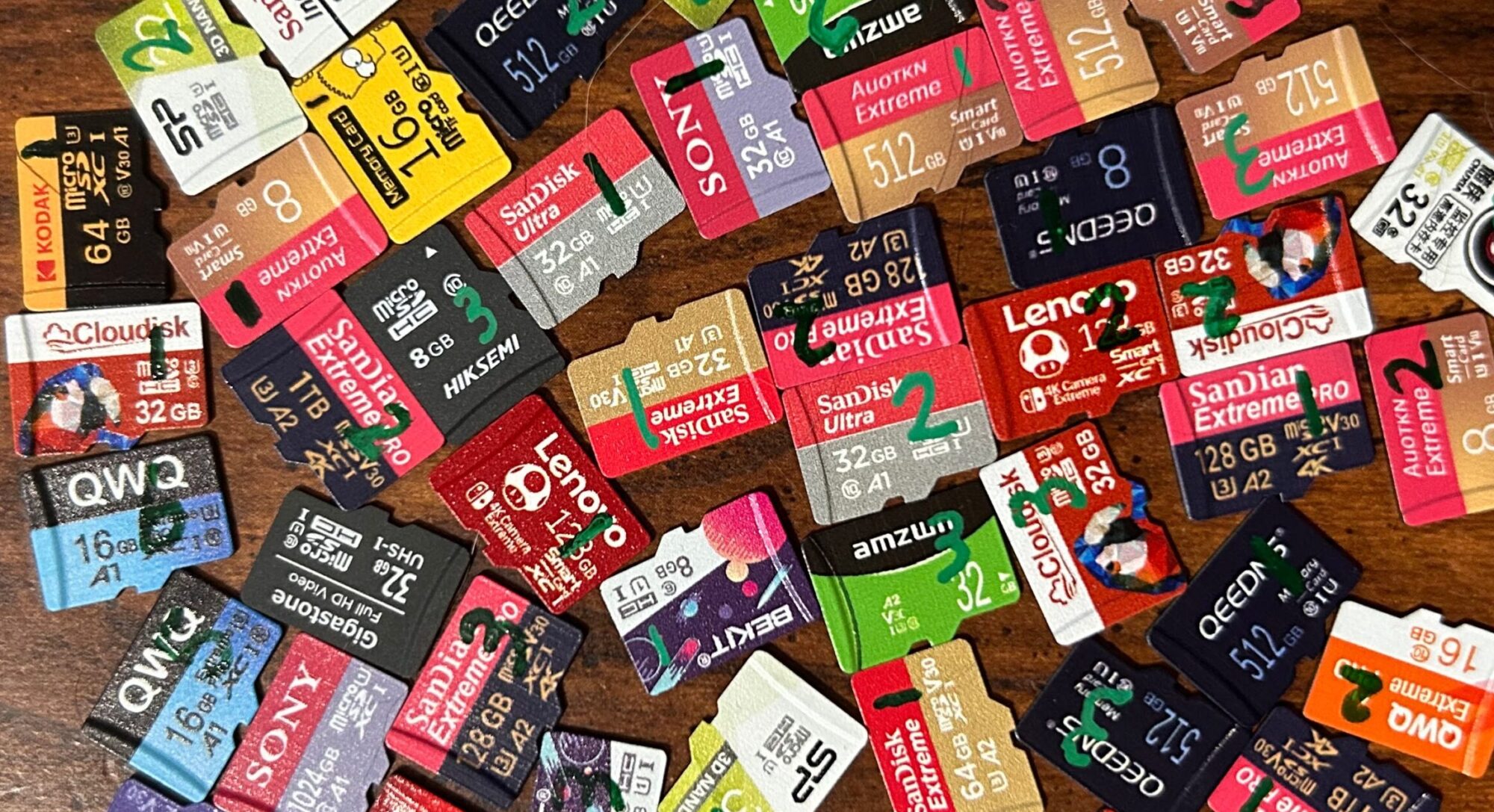Auotkn is a brand that came up frequently while browsing through microSD cards on AliExpress. The visual design is almost identical to that used by SanDisk’s Extreme cards — to the point where a casual observer from 10 feet away might not notice the difference.
I was also curious to see whether there were brands that were selling both authentic flash and fake flash under the same brand name, so I purchased the 8GB version and the 512GB version of this card. And, as it turns out, there are: this card was fake, while the 8GB card was authentic.
These cards failed the criteria that I set out for name brand cards for a few reasons:
- The cards came in retail packaging, but the packaging didn’t identify the vendor who was selling the card.
- As far as I can tell, Auotkn doesn’t sell more than just microSD cards.
- As far as I can tell, Auotkn doesn’t have a website.
- These cards were fake flash.
- One of these cards had attempted to conceal the card’s true origin — specifically, the manufacturer ID was set to hex
00.
These cards technically don’t meet the criteria for knockoffs either. The closest they get is using visual elements from a well-known name brand — specifically, the red and yellow banding used by the SanDisk Extreme’s — but that criteria referred specifically to the brand’s logo, and the red/yellow banding isn’t part of SanDisk’s logo. So…these cards are going to get lumped into the off-brand category.
I initially only purchased one of these (this was before I made the decision to test at least three of each model of card) — and it appeared that sample #1 was dead on arrival, as none of my card readers could detect it when I plugged it in. So, I ordered a replacement — and sample #2 also appeared to be dead on arrival. But then I plugged it into my Prograde Digital Dual Slot Mobile Reader, and it worked! This is when I started to investigate a little further.
At this point, I was in the throes of working on my FPGA card reader design, so I hooked it up to that and the logic analyzer — and captured the moment where my reader sent a CMD8 command (the “tell me what voltages you support” command), and here’s what I got:

Next, I hooked up one of my working cards and captured the same transaction with that one as well:

If you don’t know what you’re looking at: the top row (the blue signal) is the clock signal that my FPGA is sending to the card. The bottom row (the green signal) is the “CMD” line — it’s a bidirectional line that the host uses to send commands to the card, and that the card uses to respond to those commands. Coding is pretty simple — it’s basically “a low represents a 0, a high represents a 1” (known as NRZL). In the screenshots, the command and response start at the green dot and end at the red dot.
At first, these captures looked identical — it wasn’t until I enabled the signal tap logic analyzer (a kind of debugger that you can build into your FPGA) and set it to trigger at the point where I started listening for the reply from the card that I noticed what the problem was:

Replies from the card start with a 00 bit sequence — and my FPGA design started listening for the reply after the first 0 had already been transmitted. I wonder if that’s the issue that my other card readers were having?
Ultimately, I was only able to do performance testing with sample #2 — I was never able to get sample #1 to work properly, and sample #3 decided to self-destruct during performance testing — and the results were pretty unimpressive. This card carries the U1 and V10 markings, and sequential read/write speeds were barely enough to qualify it for those markings.
On the endurance testing front:
- I was never able to get sample #1 to work — so I declared it to have failed after 0 read/write cycles.
Sample #2 only lasted 164 read/write cycles before it passed the 50% failure threshold. Here’s what the graph of this sample’s progression looked like:
- Sample #3 — as I said above — decided to stop working during performance testing, and thus I declared it to have failed after 0 read/write cycles.
My conclusion: don’t buy these cards. They’re absolute horse shit. They’re fake, and I haven’t had a single one of these that didn’t have issues right out of the package. Go spend your money on something like the Samsung PRO Endurance 32GB instead — you’ll pay about half as much for a much more reliable card.
September 18, 2025

